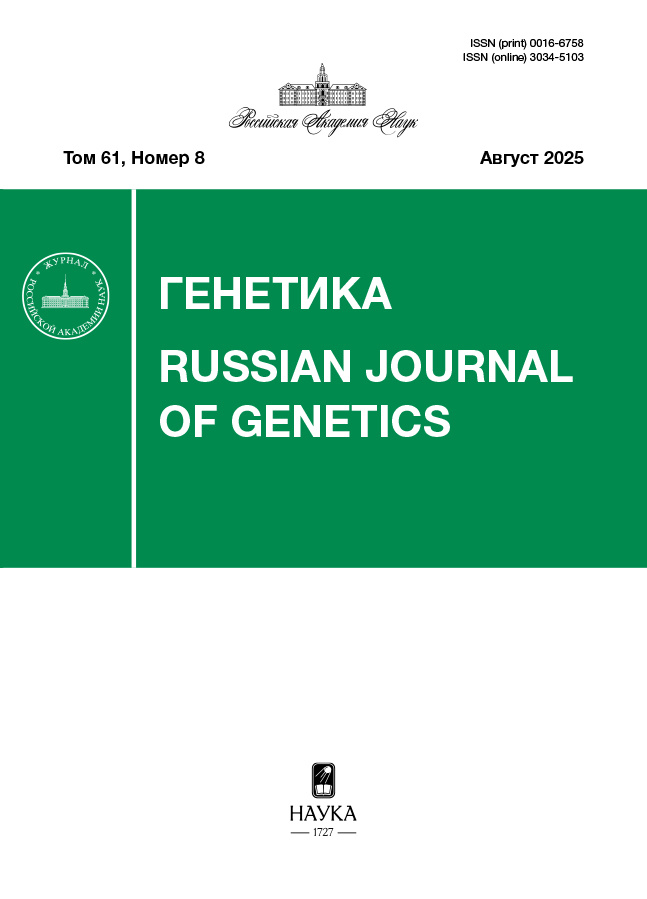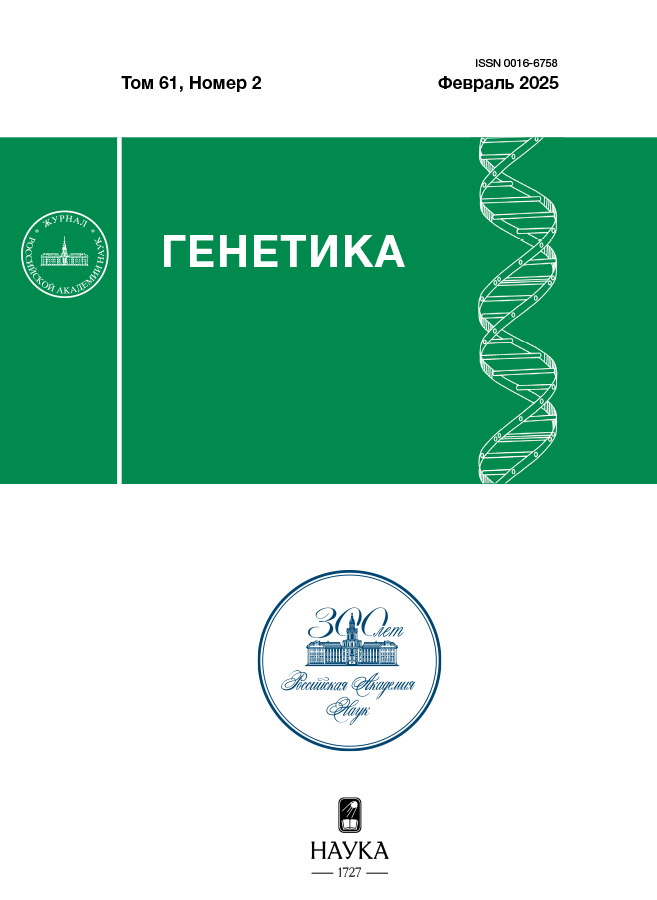Регуляция активности транскрипционного фактора NRF2 посредством деацетилирования, индуцированного SIRT1: возможная петля обратной связи SIRT1–NRF2
- Авторы: Гуреев А.П.1,2, Крутских Е.П.1
-
Учреждения:
- Воронежский государственный университет
- Воронежский государственный университет инженерных технологий
- Выпуск: Том 61, № 2 (2025)
- Страницы: 3-11
- Раздел: ОБЗОРНЫЕ И ТЕОРЕТИЧЕСКИЕ СТАТЬИ
- URL: https://vietnamjournal.ru/0016-6758/article/view/687005
- DOI: https://doi.org/10.31857/S0016675825020017
- EDN: https://elibrary.ru/uwmmtv
- ID: 687005
Цитировать
Полный текст
Аннотация
NRF2 является одним из ключевых компонентов, обеспечивающих защиту клеток от повреждений. Его активность связана с другими сигнальными путями, которые могут оказывать на него как прямое, так и косвенное воздействие. К ним относятся белки, которые могут влиять на его активность посредством ацетилирования и деацетилирования, такие как p300/CBP, HDACs. Однако исследования разных научных групп иногда противоречат друг другу. С одной стороны, имеются данные, свидетельствующие о том, что ацетилирование повышает активность NRF2, в то время как деацетилирование снижает его активность. С другой стороны, некоторые результаты демонстрируют, что активация деацетилазы SIRT1 увеличивает посттрансляционную активность NRF2. В то же время сам NRF2 может влиять на экспрессию SIRT1, образуя петлю положительной обратной связи. В этом обзоре рассматриваются различные аспекты взаимодействия между активностью фактора транскрипции NRF2 и ацетилазами/деацетилазами, в первую очередь SIRT1. Кроме того, рассматриваются варианты непрямого взаимодействия между NRF2 и SIRT1 через другие сигнальные пути, связанные с PGC-1α и p62.
Ключевые слова
Полный текст
Об авторах
А. П. Гуреев
Воронежский государственный университет; Воронежский государственный университет инженерных технологий
Email: kru751@rambler.ru
Россия, Воронеж, 394018; Воронеж, 394036
Е. П. Крутских
Воронежский государственный университет
Автор, ответственный за переписку.
Email: kru751@rambler.ru
Россия, Воронеж, 394018
Список литературы
- Hannan M.A., Dash R., Sohag A.A.M. et al. Neuro-protection against oxidative stress: phytochemicals targeting TrkB signaling and the NRF2-ARE antioxidant system // Front. Mol. Neurosci. 2020. V. 13. https://doi.org/10.3389/fnmol.2020.00116
- Jamwal S., Blackburn J.K., Elsworth J.D. PPARγ/PGC1α signaling as a potential therapeutic target for mitochondrial biogenesis in neurodegenerative disorders // Pharmacol. Ther. 2020. V. 219. https://doi.org/10.1016/j.pharmthera.2020.107705
- Kang T.C. Nuclear factor-erythroid 2-related factor 2 (NRF2) and mitochondrial dynamics/mitophagy in neurological diseases // Antioxidants (Basel). 2020. V. 9. № 7. https://doi.org/10.3390/antiox9070617
- Song M.Y., Lee D.Y., Chun K.S. et al. The role of NRF2/KEAP1 signaling pathway in cancer metabolism // Int. J. Mol. Sci. 2021. V. 22. № 9. https://doi.org/10.3390/ijms22094376
- Kim M., Jee S.C., Kim K.S. et al. Quercetin and isorhamnetin attenuate benzo[a]pyrene-induced toxicity by modulating detoxification enzymes through the AhR and NRF2 signaling pathways // Antioxidants (Basel). 2021. V. 10. № 5. https://doi.org/10.3390/antiox10050787
- Edamitsu T., Taguchi K., Okuyama R. et al. AHR and NRF2 in skin homeostasis and atopic dermatitis // Antioxidants (Basel). 2022. V. 11. № 2. https://doi.org/10.3390/antiox11020227
- Petri S., Körner S., Kiaei M. NRF2/ARE signaling pathway: Key mediator in oxidative stress and potential therapeutic target in ALS // Neurol. Res. Int. 2012. V. 2012. № 1. https://doi.org/10.1155/2012/878030
- Canning P., Sorrell F.J., Bullock A.N. Structural basis of Keap1 interactions with NRF2 // Free Radic. Biol. Med. 2015. V. 88. P. 101–107. https://doi.org/10.1016/j.freeradbiomed.2015.05.034
- Liu T., Lv Y.F., Zhao J.L. et al. Regulation of NRF2 by phosphorylation: consequences for biological function and therapeutic implications // Free Radic. Biol. Med. 2021. V. 168. P. 129–141. https://doi.org/10.1016/j.freeradbiomed.2021.03.034
- Joo M.S., Kim W.D., Lee K.Y. et al. AMPK facilitates nuclear accumulation of NRF2 by phosphorylating at serine 550 // Mol. Cell. Biol. 2016. V. 36. № 14. P. 1931–1942. https://doi.org/10.1128/MCB.00118-16
- Huang H.C., Nguyen T., Pickett C.B. Phosphorylation of NRF2 at Ser-40 by protein kinase C regulates antioxidant response element-mediated transcription // J. Biol. Chem. 2002. V. 277. № 45. P. 42769–42774. https://doi.org/10.1074/jbc.M206911200
- Apopa P.L., He X., Ma Q. Phosphorylation of NRF2 in the transcription activation domain by casein kinase 2 (CK2) is critical for the nuclear translocation and transcription activation function of NRF2 in IMR-32 neuroblastoma cells // J. Biochem. Mol. Toxicol. 2008. V. 22. № 1. P. 63–76. https://doi.org/10.1002/jbt.20212
- Cullinan S.B., Zhang D., Hannink M. et al. NRF2 is a direct PERK substrate and effector of PERK-dependent cell survival // Mol. Cell. Biol. 2003. V. 23. № 20. P. 7198–7209. https://doi.org/10.1128/MCB.23.20.7198-7209.2003
- Jimenez-Blasco D., Santofimia-Castaño P., Gonzalez A. et al. Astrocyte NMDA receptors' activity sustains neuronal survival through a Cdk5-NRF2 pathway // Cell Death Differ. 2015. V. 22. № 22. P. 1877–1889. https://doi.org/10.1038/cdd.2015.49
- Xu C., Yuan X., Pan Z. et al. Mechanism of action of isothiocyanates: the induction of ARE-regulated genes is associated with activation of ERK and JNK and the phosphorylation and nuclear translocation of NRF2 // Mol. Cancer Ther. 2006. V. 5. № 8. P. 1918–1926. https://doi.org/10.1158/1535-7163.MCT-05-0497
- Keum Y.S., Yu S., Chang P.P. et al. Mechanism of action of sulforaphane: Inhibition of p38 mitogen-activated protein kinase isoforms contributing to the induction of antioxidant response element-mediated heme oxygenase-1 in human hepatoma HepG2 cells // Cancer Res. 2006. V. 66. № 17. P. 8804–8813. https://doi.org/10.1158/0008-5472.CAN-05-3513
- Wong S.Y., Tan M.G., Wong P.T. et al. Andrographolide induces NRF2 and heme oxygenase 1 in astrocytes by activating p38 MAPK and ERK // J. Neuroinflammation. 2016. V. 13. P. 251. https://doi.org/10.1186/s12974-016-0723-3
- Sun Z., Chin Y.E., Zhang D.D. Acetylation of NRF2 by p300/CBP augments promoter-specific DNA binding of NRF2 during the antioxidant response // Mol. Cell. Biol. 2009. V. 29. P. 2658–2672. https://doi.org/10.1128/MCB.01639-08
- Kawai Y., Garduño L., Theodore M. et al. Acetylation-deacetylation of the transcription factor NRF2 (nuclear factor erythroid 2-related factor 2) regulates its transcriptional activity and nucleocytoplasmic localization // J. Biol. Chem. 2011. V. 286. № 9. P. 7629–7640. https://doi.org/10.1074/jbc.M110.208173
- Ding Y.W., Zhao G.J., Li X.L. et al. SIRT1 exerts protective effects against paraquat-induced injury in mouse type II alveolar epithelial cells by deacetylating NRF2 in vitro // Int. J. Mol. Med. 2016. V. 37. № 4. P. 1049–1058. https://doi.org/10.3892/ijmm.2016.2503
- Kulkarni S.R., Donepudi A.C., Xu J. et al. Fasting induces nuclear factor E2-related factor 2 and ATP-binding cassette transporters via protein kinase A and sirtuin-1 in mouse and human // Antioxid. Redox Signal. 2014. V. 20. № 1. P. 15–30. https://doi.org/10.1089/ars.2012.5082
- Huang K., Gao X., Wei W. The crosstalk between Sirt1 and Keap1/NRF2/ARE anti-oxidative pathway forms a positive feedback loop to inhibit FN and TGF-β1 expressions in rat glomerular mesangial cells // Exp. Cell. Res. 2017. V. 361. № 1. P. 63–72. https://doi.org/10.1016/j.yexcr.2017.09.042
- Gibbons M.D., Fang Y., Spicola A.P. et al. Enhancer-mediated formation of nuclear transcription initiation domains // Int. J. Mol. Sci. 2022. V. 23. № 16. https://doi.org/10.3390/ijms23169290
- Ganner A., Pfeiffer Z.C., Wingendorf L. et al. The acetyltransferase p300 regulates NRF2 stability and localization // Biochem. Biophys. Res. Commun. 2020. V. 524. № 4. P. 895–902. https://doi.org/10.1016/j.bbrc.2020.02.006
- Chang H.C., Guarente L. SIRT1 and other sirtuins in metabolism // Trends Endocrinol. Metab. 2014. V. 25. № 3. P. 138–145. https://doi.org/10.1016/j.tem.2013.12.001
- Yang Y., Liu Y., Wang Y. et al. Regulation of SIRT1 and its roles in inflammation // Front. Immunol. 2022. V. 13. https://doi.org/10.3389/fimmu.2022.831168
- Tang B.L. Sirt1 and the mitochondria // Mol. Cells. 2016. V. 39. № 2. P. 87–95. https://doi.org/10.14348/molcells.2016.2318
- Yang X., Park S.H., Chang H.C. et al. Sirtuin 2 regulates cellular iron homeostasis via deacetylation of transcription factor NRF2 // J. Clin. Invest. 2017. V. 127. № 4. P. 1505–1516. https://doi.org/10.1172/JCI88574
- Fang X., Lee Y.H., Zheng J. et al. ARD1-mediated NRF2 acetylation promotes human colon cancer cell proliferation // Cancer Res. 2020. V. 80. № 16. https://doi.org/10.1158/1538-7445.AM2020-4690
- Komaravelli N., Tian B., Ivanciuc T. et al. Respiratory syncytial virus infection down-regulates antioxidant enzyme expression by triggering deacetylation-proteasomal degradation of NRF2 // Free Radic. Biol. Med. 2015. V. 88. P. 391–403. https://doi.org/10.1016/j.freeradbiomed.2015.05.043
- Wang H., Yang G., Tian Y. et al. Sulforaphane inhibits angiotensin II-induced cardiomyocyte apoptosis by acetylation modification of NRF2 // Aging (Albany NY). 2022. V. 14. № 16. P. 6740–6755. https://doi.org/10.18632/aging.204247
- Mercado N., Thimmulappa R., Thomas C.M. et al. Decreased histone deacetylase 2 impairs NRF2 activation by oxidative stress // Biochem. Biophys. Res. Commun. 2011. V. 406. № 2. P. 292–298. https://doi.org/10.1016/j.bbrc.2011.02.035
- Chai D., Zhang L., Xi S. et al. NRF2 activation induced by sirt1 ameliorates acute lung injury after intestinal ischemia/reperfusion through NOX4-mediated gene regulation // Cell. Physiol. Biochem. 2018. V. 46. № 2. P. 781–792. https://doi.org/10.1159/000488736
- Zhuang K., Jiang X., Liu R. et al. Formononetin activates the NRF2/ARE signaling pathway via sirt1 to improve diabetic renal fibrosis // Front. Pharmacol. 2021. V. 11. https://doi.org/10.3389/fphar.2020.616378
- Sadovnikova I.S., Gureev A.P., Ignatyeva D.A. et al. NRF2/ARE activators improve memory in aged mice via maintaining of mitochondrial quality control of brain and the modulation of gut microbiome // Pharmaceuticals (Basel). 2021. V. 14. № 7. https://doi.org/10.3390/ph14070607
- Huang K., Huang J., Xie X. et al. Sirt1 resists advanced glycation end products-induced expressions of fibronectin and TGF-β1 by activating the NRF2/ARE pathway in glomerular mesangial cells // Free Radic. Biol. Med. 2013. V. 65. P. 528–540. https://doi.org/10.1016/j.freeradbiomed.2013.07.029
- Huang K., Chen C., Hao J. et al. Polydatin promotes NRF2-ARE anti-oxidative pathway through activating Sirt1 to resist AGEs-induced upregulation of fibronetin and transforming growth factor-β1 in rat glomerular messangial cells // Mol. Cell. Endocrinol. 2015. V. 399. P. 178–189. https://doi.org/10.1016/j.mce.2014.08.014
- Tennen R.I., Michishita-Kioi E., Chua K.F. Finding a target for resveratrol // Cell. 2012. V. 148. № 3. P. 387–389. https://doi.org/10.1016/j.cell.2012.01.032
- Baur J.A. Resveratrol, sirtuins, and the promise of a DR mimetic // Mech. Ageing Dev. 2010. V. 131. № 4. P. 261–269. https://doi.org/10.1016/j.mad.2010.02.007
- Ma F., Wu J., Jiang Z. et al. P53/NRF2 mediates SIRT1's protective effect on diabetic nephropathy // Biochem. Biophys. ActaMol. Cell. Res. 2019. V. 1866. № 8. P. 1272–1281. https://doi.org/10.1016/j.bbamcr.2019.04.006
- Arioz B.I., Tastan B., Tarakcioglu E. et al. Melatonin attenuates LPS-induced acute depressive-like behaviors and microglial NLRP3 inflammasome activation through the SIRT1/NRF2pathway // Front. Immunol. 2019. V. 10. https://doi.org/10.3389/fimmu.2019.01511
- Gureev A.P., Shaforostova E.A., Popov V.N. Regulation of mitochondrial biogenesis as a way for active longevity: Interaction between the NRF2 and PGC-1α signaling pathways // Front. Genet. 2019. V. 10. https://doi.org/10.3389/fgene.2019.00435
- Deng X., Lin N., Fu J. et al. The NRF2/PGC1α pathway regulates antioxidant and proteasomal activity to alter cisplatin sensitivity in ovarian cancer // Oxid. Med. Cell. Longev. 2020. V. 2020. № 1. https://doi.org/10.1155/2020/4830418
- Choi H.I., Kim H.J., Park J.S. et al. PGC-1α attenuates hydrogen peroxide-induced apoptotic cell death by upregulating Nrf-2 via GSK3β inactivation mediated by activated p38 in HK-2 cells // Sci. Rep. 2017. V. 7. № 1. P. 4319. https://doi.org/10.1038/s41598-017-04593-w
- Puigserver P., Rhee J., Lin J. et al. Cytokine stimulation of energy expenditure through p38 MAP kinase activation of PPARgamma coactivator-1 // Mol. Cell. 2001. V. 8. № 5. P. 971–982. https://doi.org/10.1016/s1097-2765(01)00390-2
- Fernandez-Marcos P.J., Auwerx J. Regulation of PGC-1α, a nodal regulator of mitochondrial biogenesis // Am. J. Clin. Nutr. 2011. V. 93. № 4. P. 884S–890S. https://doi.org/10.3945/ajcn.110.001917
- Puissant A., Fenouille N., Auberger P. When autophagy meets cancer through p62/SQSTM1 // Am. J. Cancer Res. 2012. V. 2. P. 397–413.
- Gureev A.P., Sadovnikova I.S., Starkov N.N. et al. p62-NRF2-p62 mitophagy regulatory loop as a target for preventive therapy of neurodegenerative diseases // Brain Sci. 2020. V. 10. № 11. https://doi.org/10.3390/brainsci10110847
- Jain A., Lamark T., Sjøttem E. et al. p62/SQSTM1 is a target gene for transcription factor NRF2 and creates a positive feedback loop by inducing antioxidant response element-driven gene transcription // J. Biol. Chem. 2010. V. 285. № 29. P. 22576–22591. https://doi.org/10.1074/jbc.M110.118976
- Feng L., Chen M., Li Y. et al. Sirt1 deacetylates and stabilizes p62 to promote hepato-carcinogenesis // Cell Death Dis. 2021. V. 12. № 4. P. 405. https://doi.org/10.1038/s41419-021-03666-z
Дополнительные файлы













